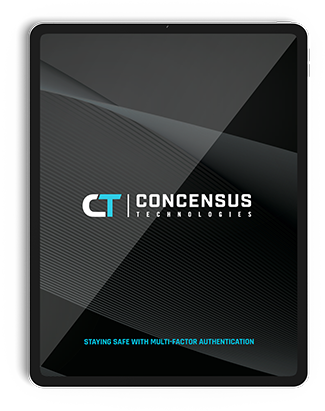
Single Sign-On: The Future of Education Technology Authentication
| December 23, 2022Technology is an important part of modern education, whether it’s the use of laptops in classrooms or the increased reliance on online education platforms. As the importance of technology in education further increases, so do the security needs of these schools, universities, and other educational institutions.
This has led to the need to embed secure authentication systems that are both easy to use and keep the user’s data secure. Never before has this been more important than today, in the era of online data breaches, identity theft, and cyberattacks.
By mid-year 2022, the education sector saw a 44% increase in cyberattacks compared to 2021.
Single Sign-On (SSO) is excellently positioned to fill this role as the authentication method of the future.
The advantages of using SSO in education settings have the potential to revolutionize the educational technology industry.
What Is Single Sign-On (SSO)?
Single Sign-On (SSO) is an authentication process that allows a user to access multiple applications and services with a single set of credentials. Instead of requiring a separate username and password for each application, SSO allows the user to gain access to all applications by logging in just once.
SSO is based on the concept of federated identity—a single set of credentials that work across multiple applications and websites. SSO sets up a relationship between the user, the applications, and the identity provider. The identity provider is responsible for verifying the user’s identity and providing access to the protected applications.
How Does SSO Work In Education Settings?
In education settings, SSO can be used to allow students and faculty to access multiple applications with a single login. This includes access to lectures, online courses, library systems, email accounts, and any other applications used by the educational institution.
When a user attempts to access an application, their credentials are sent to the identity provider. The identity provider verifies the user’s identity and issues a token. This token allows the user to gain access to the application without having to enter a username or password again.
SSO also offers advantages in terms of improved security. By using a single set of credentials to access multiple applications, it is much harder for hackers to manipulate the system. Additionally, the identity provider can be configured to enforce strong passwords and multi-factor authentication, which further strengthens security.
Benefits of Single Sign-On in Education Settings
We’ve briefly reviewed how SSO works, but what are the benefits for education settings when compared to traditional authentication methods?
There are several potential advantages to using SSO, including:
- Improved Security: As we discussed earlier, SSO uses a single set of credentials to access multiple applications. This makes it harder for hackers to gain access to the system and easier for IT staff to monitor user activity and detect potential security breaches. Additionally, SSO can be configured to enforce strong passwords and multi-factor authentication, further increasing security.
- Convenience: SSO is much more convenient for users than traditional authentication methods. By using a single set of credentials, users can access multiple applications without having to remember multiple passwords. This also makes remembering your login credentials easier and reduces the chance of user error.
- Tighter Compliance: SSO helps educational institutions meet data compliance standards, such as the Family Educational Rights and Privacy Act (FERPA). By implementing SSO, educational institutions can ensure that student and faculty data remains secure and that only authorized users have access to the system.
- Wider Accessibility: SSO can be used to provide access to a broader range of users, such as students and faculty from multiple universities or educational institutions without the need for additional authentication. This can make collaborating on research projects or sharing educational resources much easier.
- Reassurance: Finally, SSO provides reassurance to users that their credentials are secure and their data is safe. This can help increase the adoption of educational technology, as users are more likely to feel comfortable using applications and services if they know their credentials are secure.
Greater Peace Of Mind
Single Sign-On is an important advancement in authentication technology and holds the potential to greatly improve the current authentication methods used in educational settings. With improved security comes greater peace of mind and convenience for both users and IT staff as tighter compliance with privacy regulations is achieved.
The potential for SSO to revolutionize the education technology industry is clear. As technology continues to evolve and become more accessible, the advantages of SSO will only become greater.
At Concensus Technologies, we have the knowledge, experience, and understanding to provide the best authentication guidance. Our solutions are proven to work and save companies from massive cybersecurity issues down the road. Contact Us to learn more!

